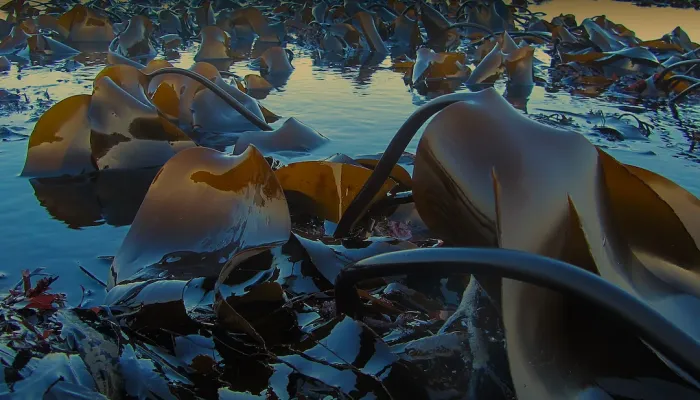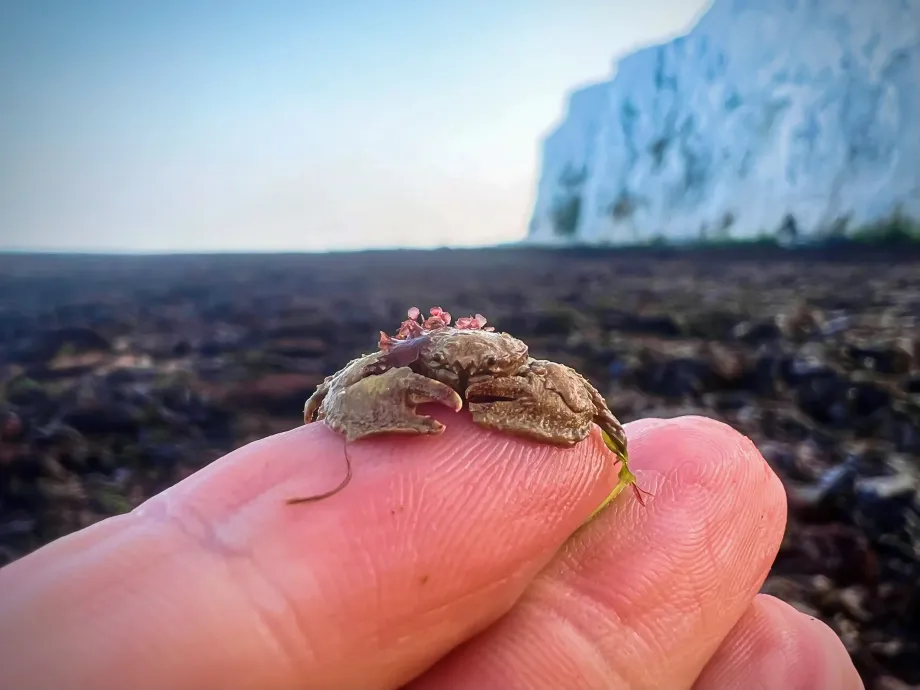
© Tracy Sutton
The porcelain crab, also known as the broad-clawed porcelain crab, is a small crab covered in tiny hairs. They are found all around UK coasts, reaching a maximum size of 15mm. They have large, flattened hairy claws and are brown in colour. They live under rocks and boulders on rocky shores - though they can be hard to spot as their brown hairy bodies are well camouflaged. They are filter feeders, combing plankton from the water using special hairs on their mouthparts.
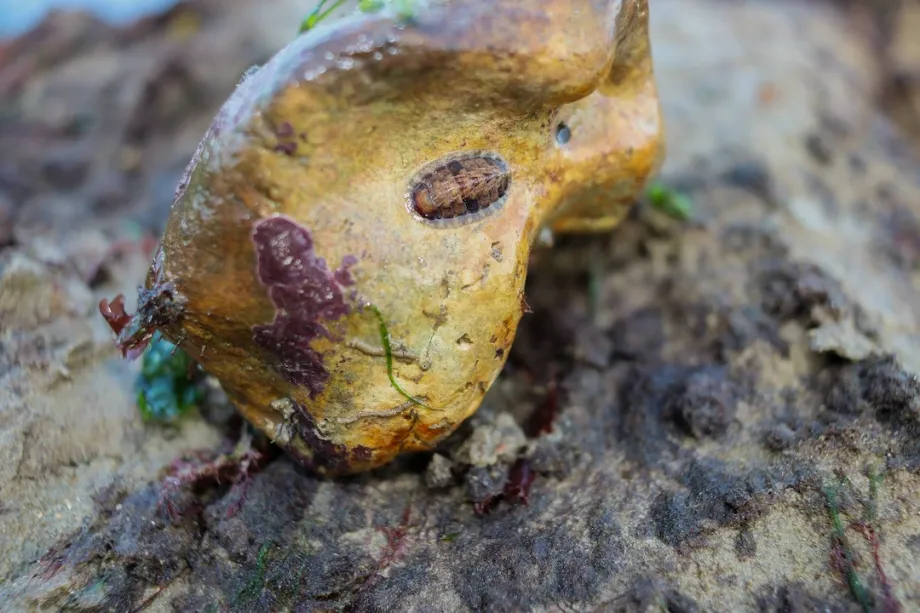
© Max Renton
The gray chiton is a species of chiton which are also known as coat-of-mail shells. They are made up of eight interlocking arched plates. The tissue surrounding the plates is known as the girdle and can be used when identifying the species. Chitons live in the intertidal zone, their mottled grey shells offering excellent camouflage against their rocky homes. They move slowly across rocks in search of food, grazing on algae using their radula – a rasping tongue that is characteristic of molluscs.
Limpets (Patella species)
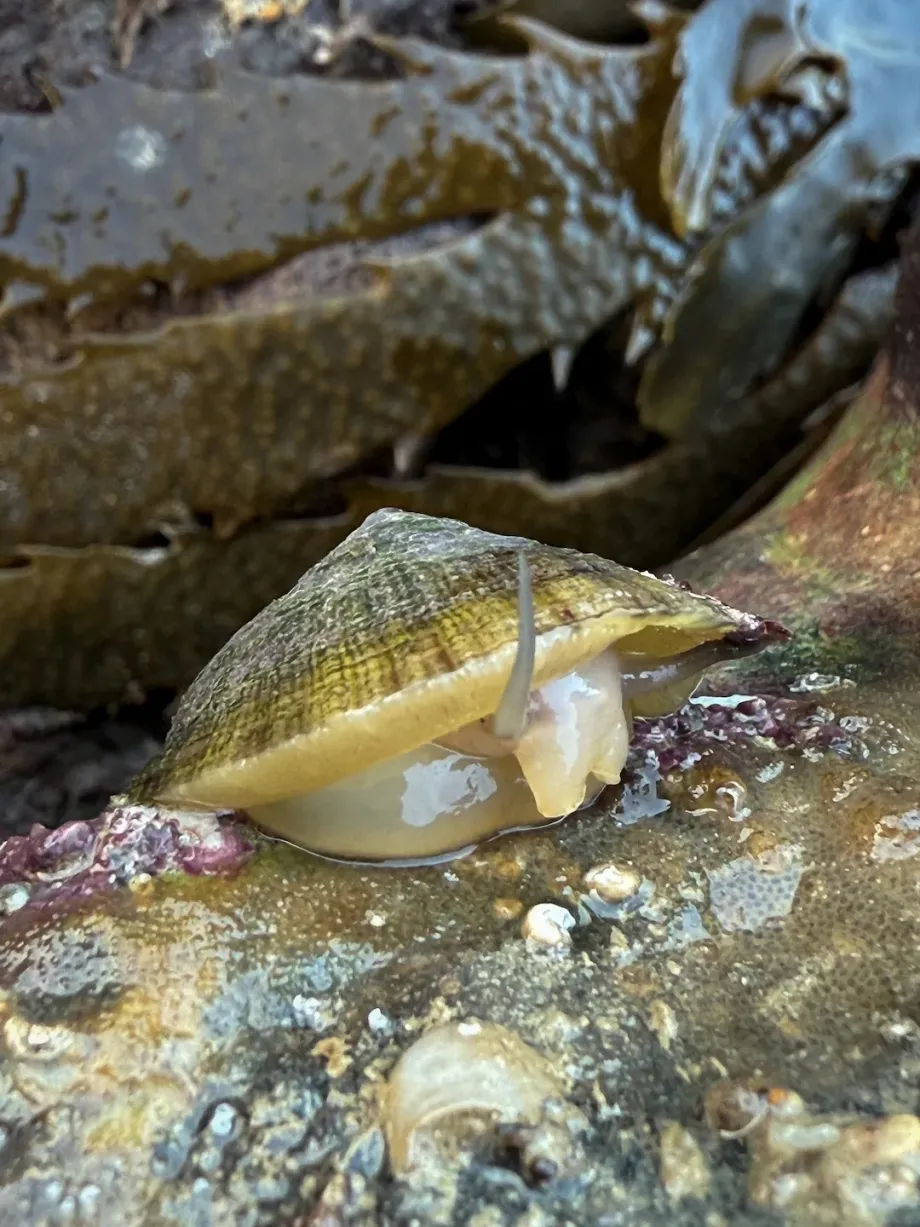
© Tina Hubbard
Limpets are the small cone-like shells that are often seen firmly clamped to the side of rocks in rockpools. Limpets are sea snails and found in abundance on rocky shores. Although they may not look impressive at first glance, once the tide comes in they spring to action, moving around rocks razing on algae using their tough tongue. From which, they can leave scars in the chalk as seen in the picture.
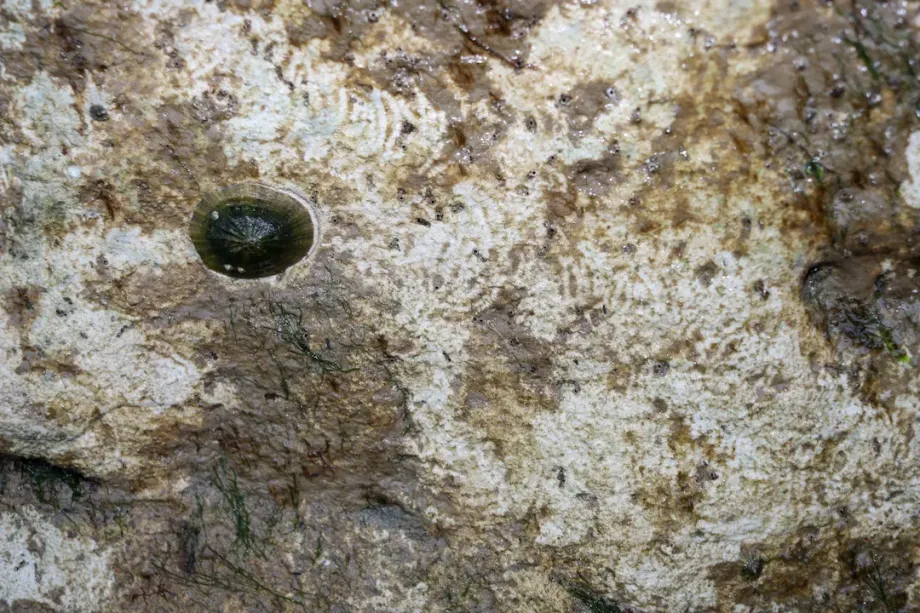
© Max Renton
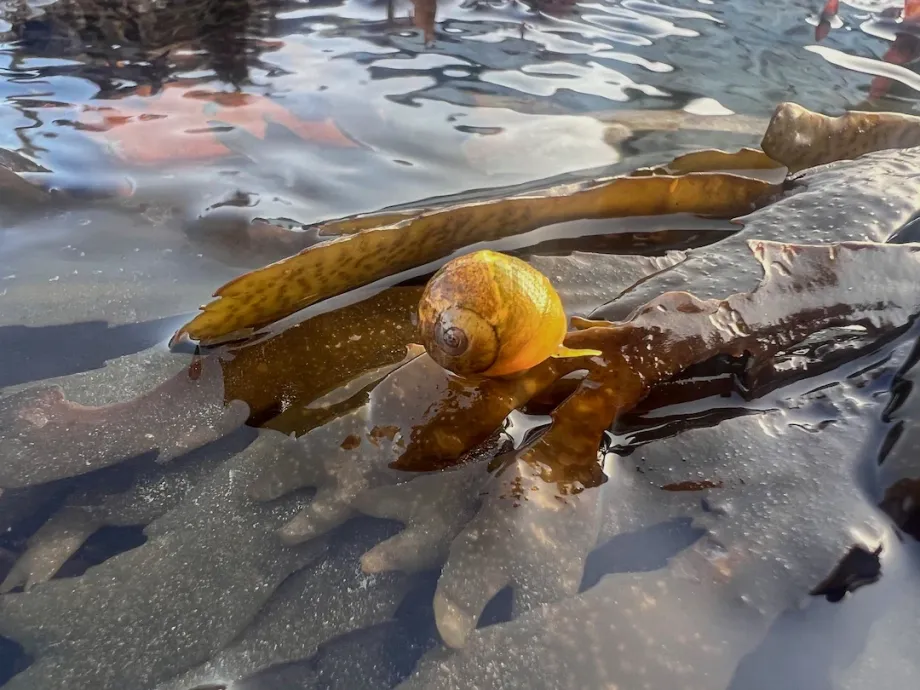
© Tracy Sutton
Flat periwinkles are common on the shore. They are sea snails (Gastropods) which have a smooth, small (up to 1.5 cm in height) shell with a flattened spire (top of the shell).
They are mostly found amongst the seaweed on which they feed, mostly commonly associated with bladder wrack. They come in lots of different colours, including orange, bright yellow, banded brown and a sort of olive green that makes them hard to spot amongst their seaweed home.
A Stalked Jellyfish (Calvadosia campanulate)
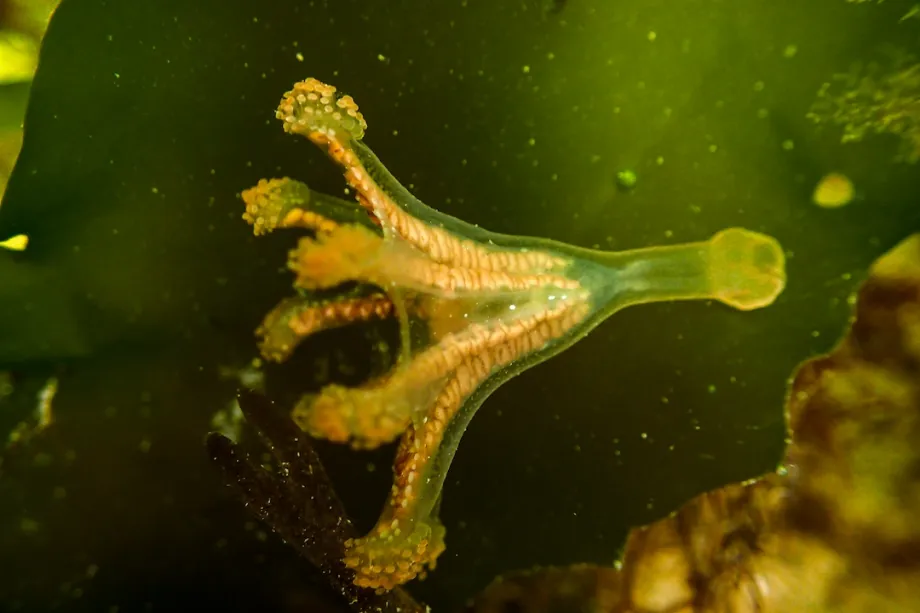
© Mark Bretherton
Stalked jellyfish are bell shaped with a stalk that has a sucker on its base to attach to things such as seaweeds. They are very small (up to 4 cm) and often found attached to algae in areas of flowing water. They have eight arms with stinging cells on the end to catch their prey. They feed on small planktonic creatures passing by in the water. Stalked jellyfish species are recognised as a UK Biodiversity Action Plan (UKBAP) Priority Species and is listed as a species of principal importance under the Natural Environment and Rural Communities (NERC) Act (2006). Furthermore, they are designated as a protected feature within the Thanet Marine Conservation Zone (MCZ), the only MCZ in the UK with stalked jellyfish as a designating feature.
Download Thanet Coast MCZ Factsheet for more
Oarweed (Laminaria digitata)
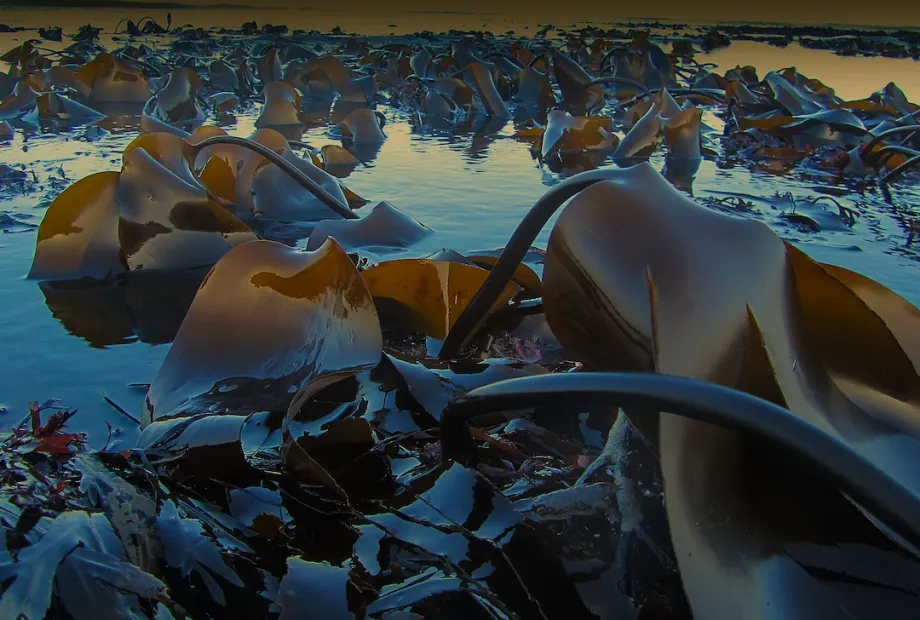
© David Burbridge
Oarweed is a common kelp seaweed found in shallow seas around our coasts. They grow in dense kelp beds, attached to rocky seabeds using tough, root-like holdfasts. They grow at depths of up to 20m and the floating fronds may be exposed at low tide.
Kelp beds are important in hosting a wide variety of marine life on the fronds, among the attachment holdfasts and in the water around. They play an important role in recycling carbon now in increasing amounts in the atmosphere. Until recently kelp species occurred widely Kent. Today, kelp is in great decline. Find out more from Ian Tittley’s blog ‘Change and our coast: a personal reflection on National Marine Week’.
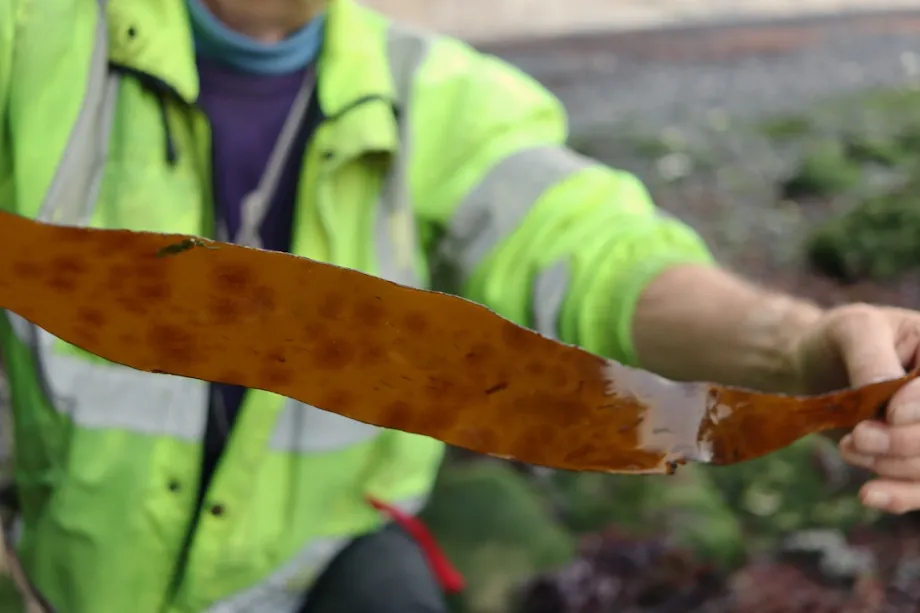
© Max Renton
How you can get involved
You can help us monitor and record these amazing species by getting involved with Shoresearch! It's a great way to contribute to the protection of your local marine environment whilst learning about all the things that live on the seashore.
Shoresearch photography competition winners
Our competition winners' wonderful photos have been featured throughout this blog. Our winners are:
Winner: Tracy Sutton - Broad claw porcelain crab
2nd place: Tina Hubbard - Limpet (Patella sp.)
3rd place: David Burbridge - Oarweed
Thanks all for taking part!

